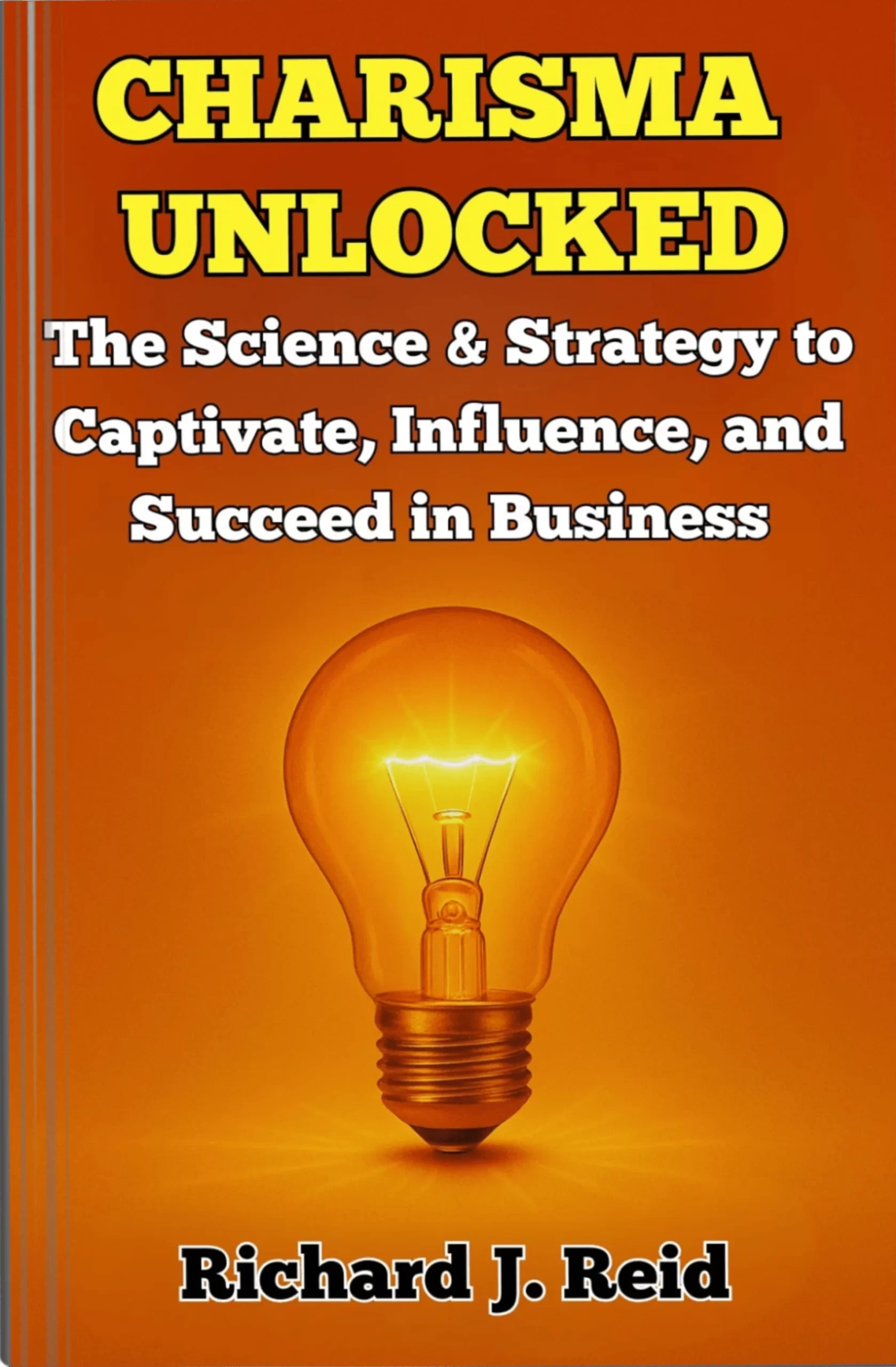Executive Summary
Successful communication is not just about delivering a message; it’s about influencing your audience’s thoughts, emotions, and behaviours. In today’s fast-paced business environment, professionals and entrepreneurs must go beyond simply presenting data—they must persuade audiences to take action. Neuro-persuasion, the fusion of psychology, neuroscience, and communication, provides a framework for doing just that.
This whitepaper explores the science behind influencing behaviours through Cialdini’s six principles of persuasion, strategies for building credibility and trust, and leveraging the neuroscience of decision-making to drive impactful outcomes. With these scientifically validated techniques, business professionals can craft persuasive presentations that captivate audiences and translate into tangible results.
Introduction
In business, influencing others can mean the difference between closing an investment deal, convincing stakeholders to support a project, or inspiring an audience to embrace a vision. But with increasingly distracted and sceptical audiences, presenting facts alone isn’t enough. The key lies in shaping how people feel, think, and act.
Neuroscientific research has shown that decisions are often driven by emotions, biases, and subconscious processes instead of strictly logical thought. Business professionals can increase their impact by crafting presentations that appeal to these underlying mechanisms. This paper provides actionable insights to help professionals unlock the power of neuro-persuasion.
Cialdini’s Six Principles of Persuasion in Presentations
Dr Robert Cialdini’s six principles of persuasion are tried-and-tested methods for influencing others. Rooted in psychology and widely applicable across industries, these principles offer a powerful foundation for persuading audiences during presentations.
- Reciprocity: Give to Receive
Humans have an intrinsic sense of fairness and reciprocity—when people receive something, they feel compelled to return the favour.
- Offer something valuable upfront, such as free resources, insights, or actionable strategies. For example, sharing a helpful tool or exclusive market data at the beginning of your presentation sets the stage for engagement and reciprocation.
- Frame your solution or offer as a “gift” to the audience: “Here’s how we can simplify your workload…”
- Authority: Demonstrating Expertise
Audiences are more likely to trust and follow knowledgeable and credible individuals.
- Highlight your qualifications, achievements, or partnerships at the start to reinforce credibility. Use testimonials or case studies from respected clients to strengthen your authority.
- Back up your claims with verifiable data, research, and credible sources to increase trustworthiness.
- Social Proof: Showing Collective Support
People are influenced by what others are doing, especially if those others are perceived as similar or aspirational.
- Include testimonials, case studies, or customer success stories illustrating how others have benefited from your product, solution, or idea.
- Use statistics such as “95% of industry leaders are adopting this trend” to demonstrate widespread acceptance.
- Liking: The Power of Human Connection
Audiences are likelier to be persuaded by people they like or relate to. This principle hinges on building rapport and empathy.
- Showcase relatability early on by sharing a personal story or finding common ground with the audience. For example: “I understand your challenges because I’ve been in your shoes.”
- Display genuine enthusiasm and warmth to foster a sense of likability and trust.
- Commitment and Consistency: Building Momentum
People tend to remain consistent with their past commitments and actions. They will likely agree to more extensive subsequent proposals if you secure a small agreement.
- Start with low-stakes questions or agreements to draw the audience in. For example: “Wouldn’t you agree that saving time is essential in today’s business world?”
- Once they agree on smaller points, escalate to more extensive commitments, such as supporting your proposed solution or investing in your product.
- Scarcity: Creating Urgency
When people perceive something as limited or exclusive, they value it more highly and are more motivated to take immediate action.
- Create urgency by emphasising scarcity (“This offer is available until the end of this quarter”) or opportunity loss (“Companies adopting this now are staying ahead of the competition”).
- Position your solutions as unique or limited in availability.
Building Credibility and Trust with Your Audience
Credibility is the cornerstone of persuasion. Without trust, even the most compelling arguments will be dismissed by sceptical audiences. Neuroscience reveals that trust activates specific regions in the brain, such as the medial prefrontal cortex, which is responsible for processing decisions and assigning reliability. Here’s how to build that trust:
- Clarity and Honesty:
Be transparent about your intentions and limitations. Disclose any potential downsides—it paradoxically increases trust by demonstrating honesty.
- Empathy and Understanding:
Show that you understand your audience’s pain points through empathy statements: “I know how frustrating it can be to deal with [specific issue].”
- Nonverbal Communication:
Maintain confident, open body language to signal authority and trustworthiness. Eye contact and an approachable tone can significantly influence how your audience perceives you.
- Evidence and Validation:
Use complex data, industry reports, and endorsements from respected sources to lend weight to your claims. Credible sources deactivate the brain’s scepticism response, enhancing openness to persuasion.
Leveraging Neuroscience in Decision-Making
Neuroscience reveals that most human decisions are driven by subconscious processes and emotional cues rather than pure logic. Here’s how professionals can integrate neuroscience principles into their presentations:
- Appeal to Emotions:
The amygdala, the brain’s emotional centre, is critical in decision-making. Presentations that evoke excitement, urgency, or empathy engage this part of the brain, compelling audiences to act.
- Use emotionally charged visuals or stories that evoke excitement or concern.
- Frame messages around how your proposal improves lives, makes people feel safer or helps them achieve their goals.
- Simplify Decision Points:
When presented with too many options or details, the brain is prone to decision fatigue. To simplify the decision process, narrow the choices and focus on key priorities.
- Present 2–3 actionable steps or solutions instead of an overwhelming list of possibilities.
- Use clear, unambiguous language to guide the audience’s thinking towards a specific action.
- Overcome Cognitive Biases:
Cognitive biases, such as confirmation bias or status quo bias, often shape how audiences perceive information. Recognising and countering these biases can enhance persuasion:
- Confirmation bias: Reinforce existing beliefs before presenting new information. For example, build rapport by affirming common ground early in the presentation.
- Status quo bias: Emphasise the risks of inaction, highlighting the benefits of changing today.
- Use the Power of Repetition:
The brain learns and internalises ideas through repetition. Neuroscience shows that repeating key phrases or themes strengthens memory recall.
- Repeat your core message at least three times during the presentation (e.g., at the introduction, midpoint, and conclusion).
- Use consistent phrasing for your calls to action to improve retention.
Actionable Steps for Neuro-Persuasion
- Design to Engage, Not Overwhelm:
Keep your slides clean and uncluttered, focusing on visual storytelling. Avoid data overload to prevent cognitive fatigue.
- Evoke Emotion, Then Drive Action:
Share emotionally engaging stories or success examples early on, then transition into the rational benefits of your proposal.
- End with a Clear Call to Action:
Use emotionally charged language to inspire urgency and clarity for the next steps. For example: “Act today to keep your competitive advantage intact!”
- Practice Confident Delivery:
Rehearse your presentation to refine your delivery, ensuring a balance of authority, warmth, and charisma.
Conclusion
Neuro-persuasion represents the next evolution in business communication. By applying Cialdini’s persuasion principles, building trust through credibility, and leveraging insights from neuroscience, professionals can transform their presentations into powerful tools for influence.
Moving beyond presenting facts, entrepreneurs and professionals can learn to design presentations that captivate attention, ignite emotional engagement, and confidently guide audiences towards action. With these techniques, the power to persuade lies firmly within reach.
Key Takeaways
- Cialdini’s Six Principles: Use reciprocity, authority, social proof, liking, commitment, and scarcity to craft persuasive messages.
- Build Trust: Establish credibility through empathy, transparency, and evidence-backed claims.
- Leverage Neuroscience: Appeal to emotions, simplify decisions, and counter biases to create impactful presentations.
- Engage and Action: Focus on clarity, connect emotionally, and deliver a strong call to action that compels audiences to respond.
By understanding and implementing these principles, professionals can deliver presentations that persuade and drive meaningful and measurable outcomes.
References
- Cialdini, R. (2001). Influence: Science and Practice.
- Kahneman, D. (2011). Thinking, Fast and Slow.
- Heath, C., & Heath, D. (2008). Made to Stick: Why Some Ideas Survive and Others Die.
- American Psychological Association. (2023). Neuroscience and Decision-Making Studies.










